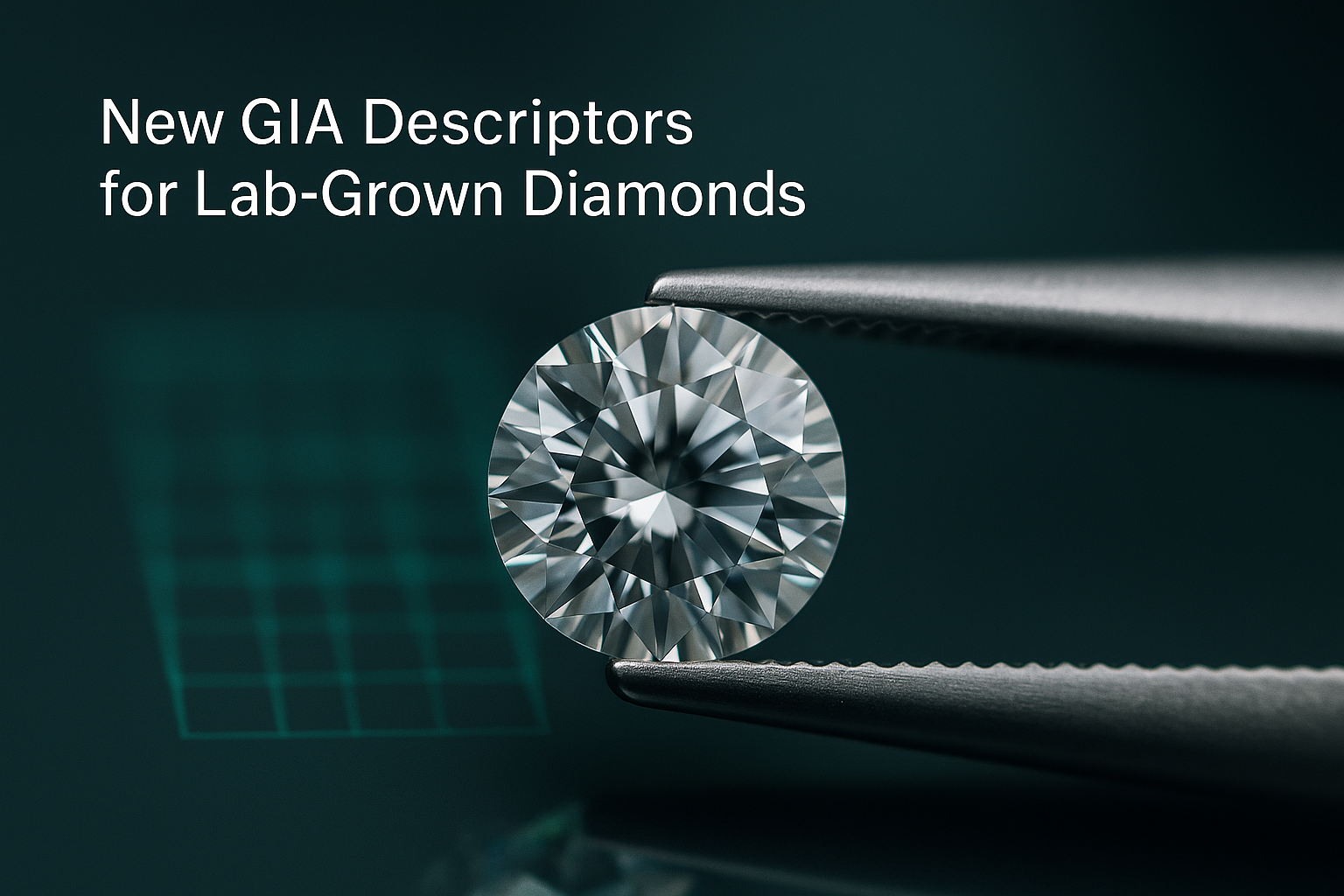Diamond Cutters International sells only natural, Earth-mined diamonds—never lab-grown. Yet we believe every client should understand the new terminology.
Quick Summary
- Timing: Later in 2025, GIA will retire the 4 Cs for laboratory-grown diamonds.
- New system: Each lab stone receives one of three descriptors—Premium, Standard, or No Grade Assigned—instead of individual color and clarity grades.
- Natural diamonds: The full 4 Cs scale remains unchanged and applies to every diamond we offer.
Why Did GIA Make the Switch?
- Consumer clarity — A report now states plainly if a stone is natural or lab-grown. No more identical “G-VS2” labels on two very different products.
- Market transparency — Retailers who carry lab stones must disclose the new descriptor up front, avoiding apples-to-oranges comparisons.
- Quality control — Stones below baseline craftsmanship or scientific thresholds receive no descriptive grade, protecting the reputation of fine natural gems.
(Source: GIA press release, 3 June 2025.)
The Three Descriptors Explained
Premium
- Appearance: Virtually indistinguishable from a well-cut natural diamond when viewed with the naked eye.
- Gemologist’s view: Microscopic growth striations or ultraviolet inspection reveal its lab origin.
- Price reality: Even “top” lab stones rarely exceed $100 per carat.
- Analogy: Like a museum-quality art print—beautiful, but experts know it isn’t the original.
Standard
- Appearance: Minor symmetry or proportion issues become obvious on close inspection.
- Gemologist’s view: Misaligned facets, windowing, or metallic flux inclusions.
- Price reality: Sits between Premium and No Grade tiers.
- Analogy: Similar to a nice poster—decorative, yet clearly not a masterpiece.
No Grade Assigned
- Appearance: Dull life, color zoning, or surface blemishes evident at a glance.
- Gemologist’s view: Metal remnants (HPHT), strain patterns (CVD), or heavy post-growth treatments.
- Price reality: Can trade for as little as $20 per carat.
- Analogy: A pixelated photocopy—poor resolution, easy to spot.
First- vs. Second-Order Signaling
Think of a painting in a gallery. From across the room (first-order) you admire its colors; up close under a magnifying lens (second-order) you can see individual brushstrokes and verify authenticity. GIA’s system follows the same logic:
- First-order signaling — What your eye perceives unaided.
- Second-order signaling — What a loupe, microscope, UV light, or spectrophotometer confirms.
Because most lab-grown stones lack geological rarity, even the Premium descriptor still belongs to a low-priced category.
What Doesn’t Change for DCI Clients
- Full 4 Cs grading on every natural diamond we sell.
- Gemprint® digital fingerprint captured at purchase—far more secure than traditional laser inscriptions.
- Rarity-based value supported by decades of market data.
- Fully Bonded Warranty backing each DCI diamond.
How Gemprint® Protects Your Diamond
- Spectral Signature Capture — A low-power laser records your diamond’s unique light-reflection pattern—its optical DNA.
- Tamper-Proof Registration — The Gemprint image and serial number live in a secure global database used by insurers and law-enforcement agencies.
- Owner Certificate — You receive both digital and hard-copy records that remain valid even if the stone is recut.
- Easy Verification — Any Gemprint-enabled jeweler can confirm authenticity without removing the stone from its setting.
Real-world success: In 2023, detectives in Boulder County, Colorado, used Gemprint records to identify and return two four-carat diamonds stolen during a home burglary—proof that optical DNA reunites high-value gems with their owners when other methods fail.
A Gemprint record is virtually impossible to duplicate, ensuring your heirloom stays uniquely yours.
How We Help—Even Though We Don’t Sell Lab Diamonds
- Education sessions — We decode new GIA reports so you can recognize lab-grown stones in the marketplace.
- Appraisals & verification — Bring in any lab stone you own; our gemologists will confirm its descriptor and disclose treatments.
- COPPER checklist — We guide every client through Chemically · Optically · Physically · Phosphorescence · Enhancements · Real to spotlight the true differences.
- Side-by-side demonstrations — Compare a Premium lab diamond (for training only) with a natural diamond of similar face-up size and see why geological rarity commands enduring value.
Ready to See the Difference for Yourself?
Our GIA-trained gemologists are happy to answer your questions—whether or not you purchased your diamond from us.
Email us, call 713-222-2728, or visit diamondcuttersintl.com/contact to start the conversation.
GIA® is a registered trademark of the Gemological Institute of America. Gemprint® is a registered trademark of Gemprint Corporation. Diamond Cutters International is an independent jeweler specialising solely in natural, Earth-mined diamonds.
